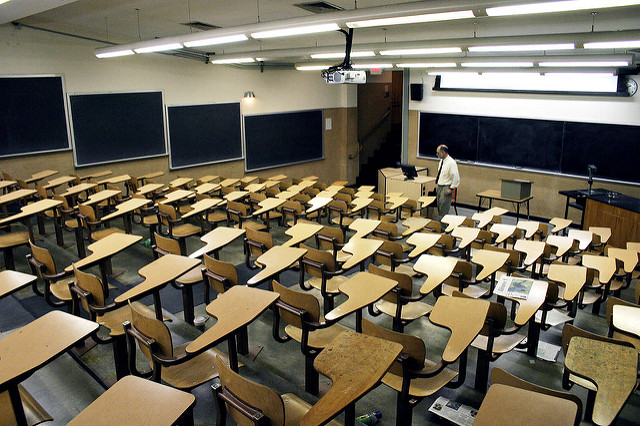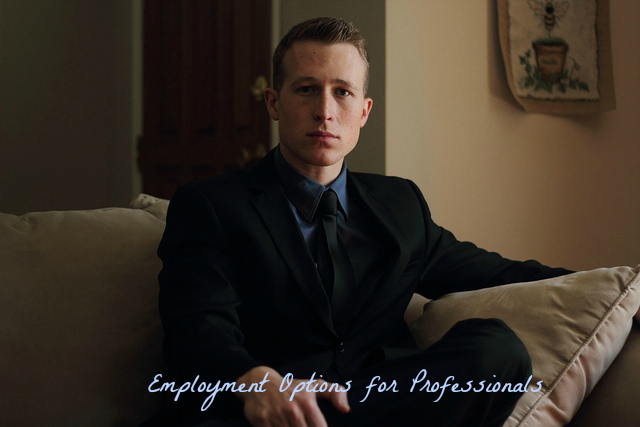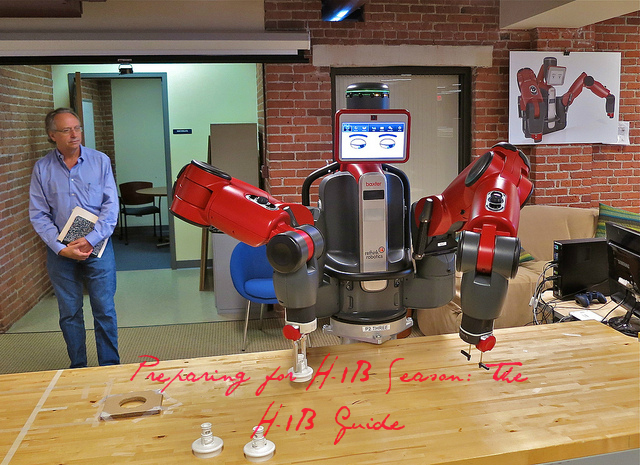We would like to inform our readers that a new development has been occurring in recent months involving Form I-539 change of status applications filed by prospective students. Students applications wishing to change their status from a B-2 visa classification to F-1 must proceed with caution. USCIS has recently been issuing denials for such change of status applications that request a change of status from a B-2 nonimmigrant visa classification to F-1 student status. These denials have been issued, despite the fact that applicants have seemingly filed their application in a timely and proper manner with USCIS. To submit an application in a timely manner, it is required that the applicant file an I-539 change of status application with USCIS, prior to the expiration of their underlying B-2 status, as indicated on the applicant’s I-94 arrival/departure record. An additional problem that has been occurring involves the delayed adjudication of these applications with the California Service Center. In delaying the processing of these applications, designated school officials (DSO) have been forced to defer student program start dates that appear on the SEVIS form, before adjudication of the applicant’s change of status application has been completed. The unfortunate cause of these delays has resulted in a discrepancy between the deferred program start date and the ending B-2 visa status or the date USCIS adjudicated the I-539 application to change status.
Articles Posted in Student Visas
Labor Union of Technology Workers Challenges STEM OPT Program
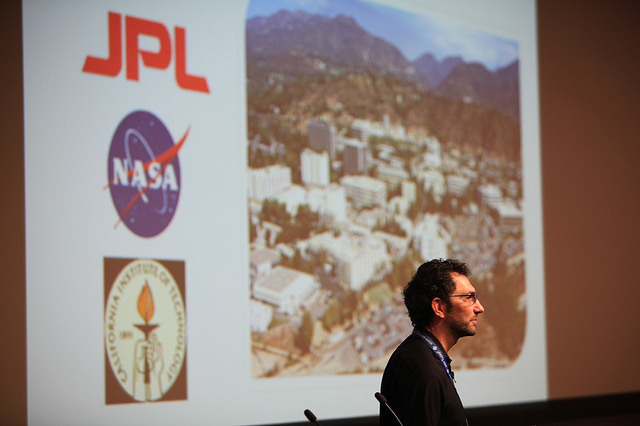 A new lawsuit has been filed in federal court challenging the Department of Homeland Security’s authorization of the Optional Practical Training (OPT) for STEM students in the United States. The Washington Alliance of Technology Workers is seeking an end to the STEM OPT program because they claim the program is putting American technology workers at a competitive disadvantage. As previously reported, the Washington Alliance of Technology Workers had been battling the Department of Homeland Security in court for the past year asking a federal judge to invalidate 17-month OPT extensions granted to STEM students, because DHS violated the notice and comment requirements of the Administrative Procedure Act (APA).
A new lawsuit has been filed in federal court challenging the Department of Homeland Security’s authorization of the Optional Practical Training (OPT) for STEM students in the United States. The Washington Alliance of Technology Workers is seeking an end to the STEM OPT program because they claim the program is putting American technology workers at a competitive disadvantage. As previously reported, the Washington Alliance of Technology Workers had been battling the Department of Homeland Security in court for the past year asking a federal judge to invalidate 17-month OPT extensions granted to STEM students, because DHS violated the notice and comment requirements of the Administrative Procedure Act (APA).
In response, the federal judge had ordered the Department of Homeland Security to publish a new final OPT rule to allow certain F-1 students with degrees in science, technology, engineering, or mathematics to obtain employment authorization. DHS published the final rule earlier this year, replacing the previous 17-month STEM extension rule that had been in place since 2008. The new rule published by DHS allows certain F-1 students to apply for 24-month extension of their optional practical training program (OPT) in order to continue working in the United States following the completion of their studies. This new rule went into effect on May 10, 2016. The same plaintiffs who challenged DHS are coming forward yet again, this time questioning DHS policy, and alleging that the STEM OPT program is putting businesses first instead of protecting American technology workers.
The Washington Alliance of Technology Workers is a labor union that represents the interests of American technology workers, who they claim are losing out on jobs to foreign workers because of guest worker programs. The Immigration Reform Law Institute (IRLI) and the labor union are working together to dismantle the program which they say circumvents American labor protections in favor of cheap labor. In a recent statement the IRLI claims that the DHS exceeded its authority by allowing the STEM OPT program to exist. According to them, “not only does the OPT program create more competition for suitable unemployed and underemployed American workers, but it creates a tax incentive for unscrupulous employers to hire foreign labor over American workers because aliens on student visas and their employers do not have to pay Medicare and Social Security taxes.”
H-1B Rejections for Unselected Petitions and Employment Options for Professionals
Throughout the next few months, USCIS will begin the process of returning H-1B petitions that were not selected in the H-1B lottery for fiscal year 2017. Each package will contain the respective H-1B petition along with a rejection notice specifying that the petition was not selected in the lottery. If you would like a copy of your rejection notice, please contact your employer or the attorney that filed your petition with USCIS. If you were not selected in the H-1B lottery for fiscal year 2017, there are a few visa options you may want to consider applying for. As always you can visit our website to read about the various different visa types that may be available to you. To discuss your options moving forward, please contact us for a consultation. Do not despair. Many applicants that were not selected in the H-1B lottery in previous years, have been chosen in subsequent years.
Long Term Options for Employment
Employment-Based Green Card
Typically, the employment-based green card application is the most permanent long term option for employment. The drawback is that obtaining an employment-based green card is a very long process that will require you to maintain another nonimmigrant status, while your green card application is pending. For more information on employment-based green cards please click here.
Family-Based Green Card (Adjustment of Status within the United States)
If you are the spouse, parent or child of a U.S. citizen, you may be eligible for family-based permanent residency. The green card application includes the application for employment authorization, which is granted within 3 months of filing. Employment authorization allows the applicant to work while their application is in process. Please be aware that the 3-month time frame for employment authorization is only for applicants applying for adjustment of status from within the United States. For more information about this process please click here.
New OPT Extension for STEM Students, Applications to be Accepted Beginning May 10th
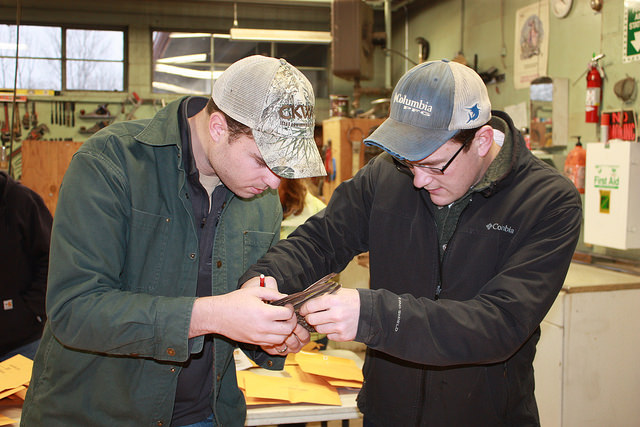
As previously reported, the Department of Homeland Security published a new final rule that will allow certain F-1 students with degrees in science, technology, engineering, or mathematics, also known as (STEM) fields, to apply for a 24-month extension of their optical practical training (OPT) program. This new 24-month OPT extension will replace the 17-month STEM OPT extension that had been previously in place since 2008. Eligible students can begin to apply for the new 24-month extension starting May 10, 2016. If you mistakenly apply for a 24-month extension before May 10, 2016 you will receive a 17-month extension.
Applicants should note that the cap gap extension has not changed. Individuals who have filed an H-1B change of status application that is currently pending with USCIS, must keep in mind that their status will only be extended until September 30. It is recommended that selected H-1B participants upgrade their petition to premium processing, so that foreign workers in F-1 status do not experience significant gaps in employment. USCIS will adjudicate STEM OPT applications under the 2008 rules until May 9, 2016. STEM OPT extension applications filed and approved before May 10, 2016 will receive a 17-month extension. If you have a pending application requesting a 17-month STEM OPT extension on May 10, 2016 you will receive a request for evidence asking for additional documentation to satisfy the new rule for the new 24-month extension. We have learned that the SEVIS system will be updated so that I-20’s will reflect 24-month extensions.
Students currently on 17-month STEM OPT
Answering Your Immigration Questions
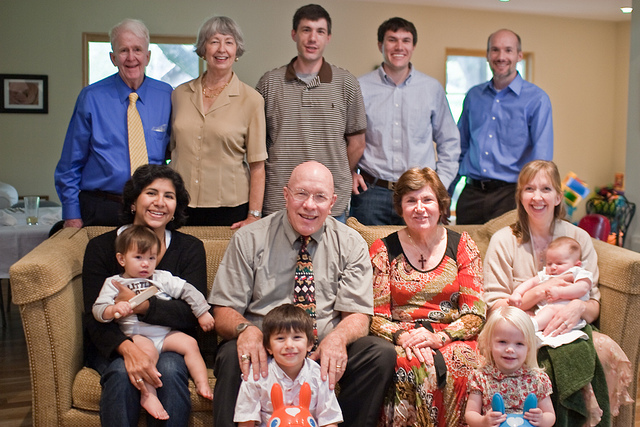
For this blog we are answering 5 questions we have recently received through our social media platforms and our website. Please remember that every case is different and every immigration journey is unique. You should not compare your situation to anyone else’s. We hope that our answers will provide you with further guidance while you embark on your immigration journey. If you have any further questions, please call our office for a free legal consultation. We serve international clients and domestic clients in all 50 states. We thank you for your continued trust and interest in our law office.
Change of Status B-2 to F-1
Q: I need advice regarding my change of status. I am currently in the United States on a B-2 tourist visa. I have filed a change of status application to change my status to F-1 student. My B-2 duration of stay will expire today and my change of status application to F-1 student is still pending with USCIS. I informed my school that I will be postponing my classes and was notified that I need to file a new I-20 and provide some missing information. I have time to make adjustments to my application but I would like to know the steps to correct any missing information. I also wanted to know if I need to leave the United States immediately since my F-1 application is still pending. Please assist.
New OPT STEM Rule for F-1 Students Effective May 10, 2016
The new replacement rule affecting the Optional Practical Training (OPT) program for F-1 students with degrees in science, technology, engineering, or mathematics (STEM), has been posted and is now available for inspection in the federal register. The new replacement rule will replace the previous 2008 rule and become effective beginning May 10, 2016.
The new rule authorizes F-1 STEM students pursuing a 12-month Optional Practical Training program in the United States to extend their ‘OPT’ status for a 24-month period. The 24-month extension replaces the 17-month STEM OPT extension previously available to STEM students. The 17-month STEM OPT extension will continue to be effective until May 9, 2016. The new 24-month extension applies only to F-1 STEM OPT students attending accredited United States institutions, whose employers participate in the U.S. Citizenship and Immigration Services E-verify program. Only students in a valid period of post-completion OPT may file for a STEM OPT extension. The 24-month extension, coupled with the 12-month period given with initial post-completion OPT, will give STEM students a period of 36 total months of practical training in their field. Amendments that come with the new rule include additional oversight and improvement of the program requiring formal mentoring and training plans by employers, a new STEM definition and Classification of Instructional Program Categories, provisions on previously obtained STEM degrees, Accreditation and Employer Visits, and OPT compliance. In addition, new provisions have been introduced relating to wage and protections for STEM OPT students and safeguards for American workers as described below.
The ‘Cap Gap’ provision previously available to F-1 STEM OPT students in 2008 remains in place. This provision allows students with a timely filed H-1B petition requesting a change of status, the benefit of automatically extending their F-1 status and employment authorization until October 1 of the H-1B visa fiscal year for which the student has applied. The Cap-Gap was created with intention of avoiding any disruption students might experience in their careers and personal life as a result of temporary gaps in their status.
UPDATE: Review of New STEM OPT Replacement Rule Completed
As previously reported, the Department of Homeland Security was given a 90-day extension earlier this year, by the Federal District Court of Columbia to issue a new replacement rule for the STEM Optional Practical Training (OPT) program to continue. The STEM OPT program, a program that had been in place since 2008, was invalidated earlier this year following a court order which required DHS to publish a new replacement rule governing the program by February 12, 2016. In response to the court order, DHS requested an additional extension arguing that exceptional circumstances warranted additional time to review the overwhelming number of comments received during the comment period. The court granted the extension, giving DHS until May 10, 2016 to implement a final rule. On March 2nd, the Office of Information and Regulatory Affairs, Office of Management and Budget (OMB) announced that review of the new OPT STEM replacement rule had been completed. DHS is expected to submit the final rule in the federal register within the next few weeks. The new rule will take precedence over the 2008 OPT STEM rule that had been in place previously. The final rule is not expected to be implemented until May 10, 2016. Once the final rule is published, we will have a better idea of where applicants will stand in relation to pending applications for employment authorization and receiving 7-month OPT extensions.
Please continue to follow our blog for more information. If you require legal advice please contact us for a consultation.
Op-Ed: As Elections Near, Republicans Politicize H-1B Visa Program
Last week, the Senate held a hearing scrutinizing the temporary H-1B skilled worker program, the second hearing of its kind within just one year. At issue was the protection of American jobs and dissatisfaction with the program among conservatives in the Senate, who believe the program has caused job displacement at the expense of thousands of Americans. Beyond their own political convictions, Republican Senators eyeing the White House, have also scrutinized the H-1B visa program, in order to appease voters who, maintain a hard line stance on immigration.
During the hearing, the Senate Judiciary panel considered testimony questioning the integrity of the H-1B visa program. Many witnesses accused their employers of violating the conditions of the program, alleging that their employers sought to replace American workers with foreign workers by utilizing the H-1B visa program to pay those workers lower wages. This accusation is troublesome for various reasons. Firstly, it is well known that the H-1B visa program requires an employer to hire a foreign worker in a specialty occupation only when the employer cannot obtain the necessary skills and abilities to perform the specialty occupation within the American workforce. H-1B workers must possess distinguished merit and ability, and demonstrate their qualifications through the attainment of a bachelor’s degree or its equivalent, in the intended field of employment. Secondly, the H-1B visa program contains provisions which are specifically designed to protect similarly employed American workers from any adverse affects suffered from the employment of temporary foreign workers. Consequently, there are also provisions which aim to protect H-1B nonimmigrant workers from H-1B violations. One of those provisions includes the requirement that American employers pay temporary H-1B workers at least the ‘prevailing wage,’ the average wage paid to similarly employed workers (experience and qualifications) in a specific occupation in the area of intended employment. This would mean that any employer seeking to use the H-1B visa program for the purposes of obtaining ‘cheap foreign labor’ or to replace American workers would be violating the conditions of the H-1B visa program altogether.
Judge Grants DHS 90-Day Extension for STEM OPT Replacement Rule
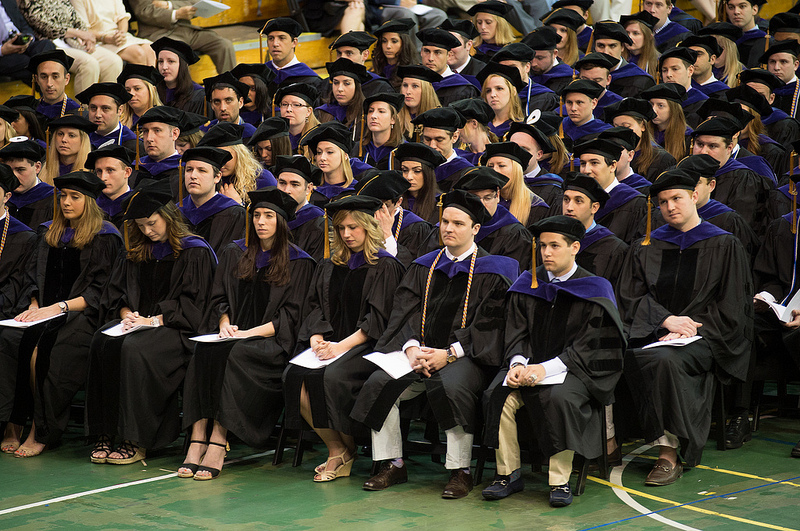
On January 23, 2016 a Federal District Court Judge for the District of Columbia granted the federal government an extension for the STEM Optional Practical Training (OPT) program to resume, giving the Department of Homeland Security (DHS) more time to issue a new replacement rule. The STEM OPT program had been in place since 2008, but was recently invalidated following a court order requesting the Department of Homeland Security (DHS) to issue a new replacement rule by February 12, 2016. DHS responded by requesting an additional 90 days to implement the final rule by May 10, 2016.
As part of their request, the federal government argued that exceptional circumstances existed to warrant the extension. This was owed to an unprecedented amount of comments received by DHS, that could not be reviewed and analyzed by the February deadline. According to the Administrative Procedures Act, DHS is required to publish a final rule 60 days before its effective date. During the comment period alone, DHS received over 50,000 comments that were nearly impossible to review and revise by the February deadline. Although plaintiffs for the original suit challenged the court stating that the court did not have jurisdiction to grant the extension, the court agreed with the federal government. The court stated that it did indeed have jurisdiction over the motion and that the undue hardship that STEM OPT participants and employers would experience, absent a new replacement rule, constituted an exceptional circumstance to warrant the extension. It is estimated that approximately 434,000 international students might benefit from the new replacement rule.
Presently, 23,000 students are STEM OPT participants, while approximately 2,300 more individuals are dependents of these participants. Had the extension been denied, thousands of students, their educational institutions, and their employers would be adversely affected. Litigation will continue over the validity and issuance of the replacement rule. If your initial OPT will expire between now and the May 10 deadline, and you are still within the 120-day filing window, you should apply for your 17-month extension as soon as possible, to benefit from the 17-month extension under the 2008 OPT rule. If your OPT will expire on or after May 11, and you are still within the 120-day filing window, you may be able to receive a 17-month extension. Once the new rule is in place and you are outside of the filing window, you will need to wait for the new rule and apply for benefits under the new rule. The new rule is expected to be published by March 11, 2016.
The H-1B Guide: Preparing for H-1B Season
What is the H-1B Visa? The H-1B visa is a work visa that is awarded on a lottery basis. The H-1B visa program allows American companies and/or qualifying organizations to employ foreign workers to fill specialty occupations temporarily. The foreign worker must posses a combination of education, specialized training, and/or experience that is equivalent to training acquired by the attainment of a U.S. bachelor’s or higher. The H-1B program was first enacted by Congress with the intention of helping American employers seek out distinguished foreign workers, possessing the skills and abilities necessary to perform the duties of the specialty occupation. The H-1B program has remained popular because it has allowed American employers to remain competitive and provides highly skilled foreign workers a path to permanent residence.
The provisions of the H-1B visa program allow qualified foreign workers to attain temporary employment having met specific requirements. H-1B visa recipients typically work in the STEM fields as scientists, engineers, computer programmers, software developers, business analysts, etc. although fashion models are also classified under the H-1B category.
USCIS will begin to accept H-1B cap-subject petitions for fiscal year 2017 beginning April 1, 2016. April 7, 2016 is the absolute deadline to file an H-1B cap-subject petition. Please note: employers cannot file an H-1B petition for an employee more than 6 months before the employee’s intended start date. If accepted, H-1B visa workers can begin employment by October 1st. The H-1B visa is issued for up to three years but may be extended for another three years.
 Visa Lawyer Blog
Visa Lawyer Blog


